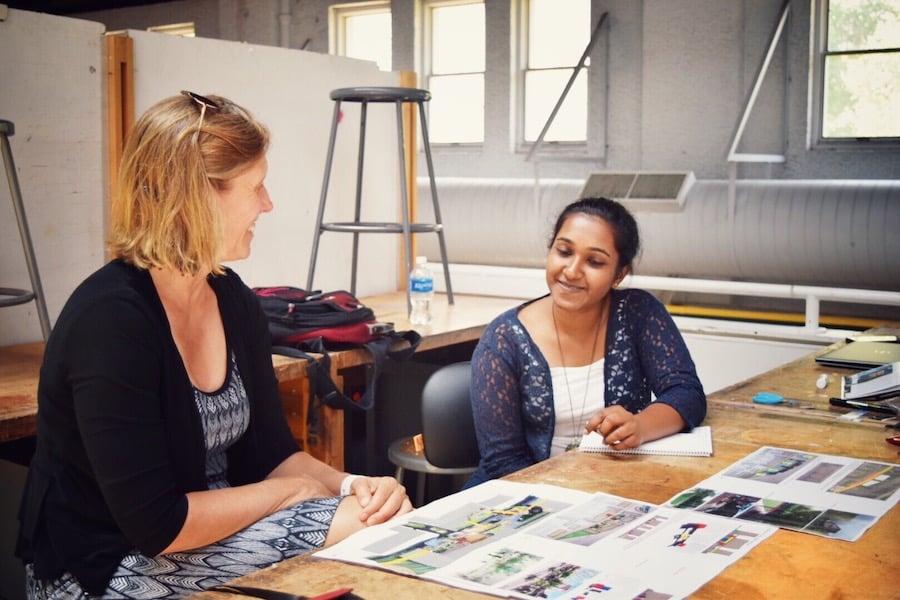I’m often asked for advice about helping students manage the new school formats that are coming in Fall 2020. I know why: As a professor of educational psychology and as an academic life coach, I do carry a few insights about what makes or breaks a student’s experience with online and/or hybrid courses. I’ve worked with hundreds of college-age and college-bound students over the past 20 years and I’ve seen the full range of successes and struggles.
There’s a nice list of tangible steps each student could and should take to learn at their best–which means with the least amount of overwhelm and the most amount of comprehension. I can sum up the secrets to success in just one statement: Sit in the front row.

Where is the front row in a virtual classroom?
If you feel confused by what it meant here because the classes aren’t in-person–how can someone sit in the front if there is “no” classroom? Think about the very source of the confusion. Most of us have a longstanding perception of what “school” looks like and it isn’t sitting in your kitchen counter in pajamas. That is the first step to doing well this semester: Reconsider how you perceive where teaching and learning can happen. Stop resisting the change and embrace the possibilities of the new process. This mindset is an excellent start toward success.
The next step for students is behaving like you would IF you were in person, and you sat front and center in the class.
We all know how that behavior differs from when you sit in the back row, slumped in a chair, doodling, whispering, daydreaming. I see it each semester in my teaching.
What front row students do
Front-row kids focus their eyes on the teacher. Front-row kids take continuous notes. Front-row kids nod and engage with what is being said. Front-row kids sit up straight. Front-row kids get there on time or early to get a good seat. Front-row kids have organized notebooks and pens.
When classes are virtual, you still have the chance to be a front-row student.
- Check your class material for each subject early, as soon as it’s released in every class.
- Get to a Zoom meeting first and make yourself nod and look at the teacher in a synchronous class. (We love that and miss your nods desperately).
- Raise your hand. Send emails or chats to your teachers to engage them; do not hide in the proverbial back row. Make up questions to ask if you must.
- Write notes constantly, even when you don’t think you need to or don’t think anyone will care if you are. Your brain cares. It will eventually matter to your learning (I promise this).
- Sit up straight in your chair. Sure, you can take an online class on your bed, but you don’t think as clearly when you are slouched. I am not being posture police, I am referring to embodied cognitive science here.
- Write down all the things in your planner. Use the multi-colored pens of the front row kids. Pretend your entire semester depends on how orderly your planner is…because it is. Note on planners: anything works really as long as you write it and you don’t lose it, whiteboards, notebook, etc. Fancy monogrammed books aren’t mandatory here.
- Go to study hall. You may no longer have one assigned but pretend you do: act like you go to the library to do homework and have to be quiet in there, even if it’s actually your living room and the only one bothered by your presence is your dog.
Do all these things, and you will have a good semester, no matter the format. Other life problems may arise; such as health crises, financial worries, domestic stressors. Address these to the best of your ability, seeking help as possible.
There are many resources available to you and I hope you’ll use them fully. But then go right back to the first row. Sit in the “front and center seat” of your classes, focus on them for the duration needed, because your future deserves it. And it’s a very, very bright one.
More to Read:
50 Things Teens Can Do When They Turn 18 – Here is a list of everything that teens are able to do once they are 18.
Virtual Volunteer Opportunities for Teens – This will give your teen some ideas a bout how to find a virtual volunteer activity.









